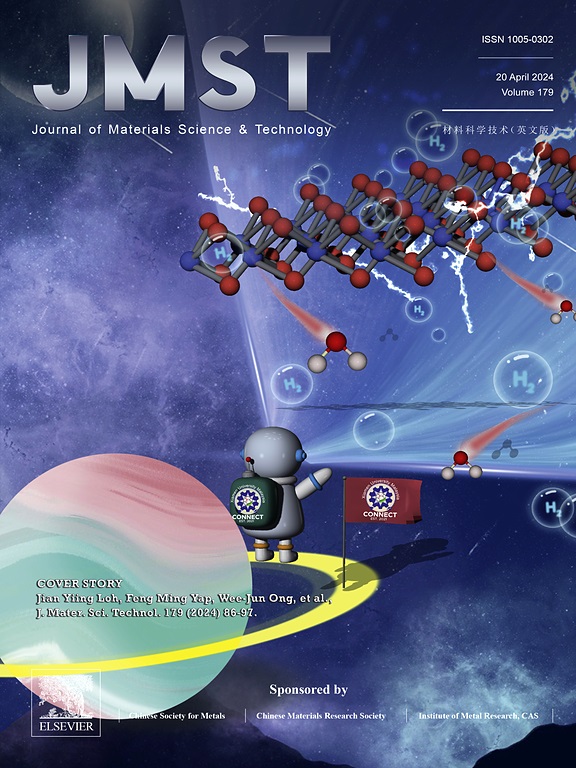The precipitation evolution and coarsening resistance of dilute Al-Zr-Er-Yb (-Sc) alloys
IF 11.2
1区 材料科学
Q1 MATERIALS SCIENCE, MULTIDISCIPLINARY
引用次数: 0
Abstract
The precipitation and coarsening behavior of L12 nanophases in Al-0.15Zr-0.15Er-0.15Yb-xSc (wt. %) alloys during aging were characterized by Double-Cs-corrected STEM, TEM, microhardness testing, electrical conductivity measurement, and first-principles calculations. The results indicate that the Al3(Yb, Er) initiates precipitation at approximately 175 °C with substantial precipitation occurring at 250 °C. The Al3Sc and Al3Zr precipitate at approximately 325 and 450 °C, respectively. The core/shell precipitates initially form in Al-Zr-Er-Yb-Sc alloys consisting of an Al3(Yb, Er) core, an Al3Sc inner shell, and an Al3Zr outer shell. Upon prolonged aging, the core and inner shell remain as the Al3(Yb, Er) and Al3Sc, respectively, with the outer shell transforming into Al3(Yb, Er, Zr), and the interface with α-Al remaining as the Al3Zr. The precipitation evolution of the core-shell phases aligns with thermodynamic predictions based on solute segregation energies and phase interface energies. The increase of Sc content can effectively improve the aging response rate and strength of alloys. A modest Sc addition notably improves the coarsening resistance of the precipitation, while an excessive amount does not further improve this resistance.

稀Al-Zr-Er-Yb (-Sc)合金的析出演变及抗粗化性能
采用双cs校正的STEM、TEM、显微硬度测试、电导率测量和第一性原理计算等方法研究了Al-0.15Zr-0.15Er-0.15Yb-xSc (wt. %)合金时效过程中L12纳米相的析出和粗化行为。结果表明,Al3(Yb, Er)在175℃左右开始析出,250℃时开始大量析出。Al3Sc和Al3Zr分别在325℃和450℃左右析出。在Al-Zr-Er-Yb-Sc合金中,芯壳相最初形成于由Al3(Yb, Er)芯、Al3Sc内壳和Al3Zr外壳组成的合金中。时效延长后,芯层和内层分别保持Al3(Yb, Er)和Al3Sc,外层转变为Al3(Yb, Er, Zr),与α-Al的界面保持为Al3Zr。核壳相的析出演化符合基于溶质偏析能和相界面能的热力学预测。Sc含量的增加能有效提高合金的时效响应率和强度。适量添加Sc可显著提高析出物的抗粗化性能,而过量添加Sc则不能进一步提高其抗粗化性能。
本文章由计算机程序翻译,如有差异,请以英文原文为准。
求助全文
约1分钟内获得全文
求助全文
来源期刊

Journal of Materials Science & Technology
工程技术-材料科学:综合
CiteScore
20.00
自引率
11.00%
发文量
995
审稿时长
13 days
期刊介绍:
Journal of Materials Science & Technology strives to promote global collaboration in the field of materials science and technology. It primarily publishes original research papers, invited review articles, letters, research notes, and summaries of scientific achievements. The journal covers a wide range of materials science and technology topics, including metallic materials, inorganic nonmetallic materials, and composite materials.
 求助内容:
求助内容: 应助结果提醒方式:
应助结果提醒方式:


